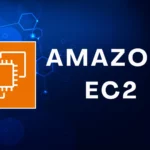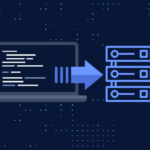
Date & Time : Apr 24, 12:30 PM – Apr 25, 12:30 PM (GMT+5:30)
Imagine a world where platforms manage themselves — scaling, healing, securing, and optimizing without waiting for a human nudge. This isn’t science fiction. This is Kubernetes automation, and it’s happening now.
The Future Is Autonomous
The dream of a self-operating platform is no longer a far-off vision. Thanks to innovations in cloud-native infrastructure, automation is reaching unprecedented heights. Kubernetes is no longer just an orchestrator — it’s becoming the control center of fully autonomous infrastructure.
In a recent CNCF On-Demand Webinar titled “Kubernetes is the New Skynet,” the spotlight was on what happens when you take automation to its limits. Spoiler: things get very interesting.
Let’s dive into the cutting-edge tools and ideas that are turning Kubernetes into the foundation for intelligent, self-operating systems.
What Powers This Revolution?
⚙️ Talos Linux – Purpose-Built for Kubernetes Automation
At the heart of this evolution is Talos Linux, a security-hardened, immutable OS built exclusively for Kubernetes. Designed with zero friction in mind, Talos removes traditional admin tools (yes, no SSH!), embracing a GitOps-style API for configuration and management.
Why it’s a game-changer:
- Immutability: No drift, no surprises — you declare what the system should be, and Talos enforces it.
- No shell, no SSH: This isn’t your typical Linux. Everything is managed via a declarative API, minimizing human error and eliminating manual intervention.
- Secure by design: Reduced attack surface by stripping out unnecessary components.
Talos transforms bare metal into a Kubernetes-native experience — enabling you to boot, configure, upgrade, and reboot clusters entirely through automation.
🧠 KubeVirt – VMs Meet Kubernetes
Modern workloads are a blend of containers and virtual machines. Enter KubeVirt, the bridge that lets you run VMs as first-class citizens in Kubernetes.
Why it matters:
- Unified management: Treat VMs like pods — schedule, scale, and monitor them just like any other Kubernetes resource.
- Lift-and-shift: Legacy apps that can’t be containerized? KubeVirt helps bring them into the modern world without a rewrite.
- Seamless integration: Use Kubernetes-native tools like
kubectlandHelmto manage everything, VM or container.
KubeVirt eliminates the silos between VM and container management, creating a unified infrastructure landscape that’s easier to automate and scale.
🧩 Large-Scale Cluster Management – The Automation Frontier
Automation doesn’t stop at a single cluster. The real challenge is orchestrating dozens or hundreds of clusters — across data centers, clouds, and edge locations. Think: multi-cluster, multi-tenant, multi-purpose — all managed with minimal input.
This is where Kubernetes really begins to resemble Skynet — not in a dystopian sense, but as a highly intelligent, reactive, and proactive control plane. The focus is on:
- Fleet management: Automate deployments, upgrades, and policies across entire fleets of clusters.
- Self-healing: Systems that detect and recover from faults autonomously.
- GitOps + CI/CD Pipelines: Declarative everything — infrastructure as code, policy as code, security as code.
- Policy-driven governance: Automate compliance, resource controls, and access boundaries with tools like OPA and Kyverno.
The goal is clear: no more babysitting clusters. Let the system handle itself — you just define the intent.
Why Kubernetes Automation Is the Future
This new wave of Kubernetes automation isn’t just cool — it’s critical. As complexity grows and scale explodes, human-operated systems simply can’t keep up.
Here’s what makes Kubernetes the ideal base for self-operating platforms:
✅ Declarative nature – Perfect for automation and repeatability
✅ Extensibility – Operators, CRDs, webhooks, and custom controllers make the platform programmable
✅ Massive ecosystem – Tools like Talos, KubeVirt, ArgoCD, Flux, and Crossplane extend Kubernetes into a full-fledged operating system for infrastructure
✅ Cloud-native mindset – Ephemeral, scalable, API-driven — designed for automation from day one
So… Is Kubernetes the New Skynet?
Not exactly. But it’s definitely becoming the central nervous system of self-operating platforms.
We’re entering an era where clusters:
- Deploy themselves
- Heal themselves
- Secure themselves
- Scale themselves
All with minimal human intervention.
And this is just the beginning.
Final Thoughts
The rise of Kubernetes automation is thrilling. It represents a seismic shift in how we think about operations, infrastructure, and control. With tools like Talos Linux, KubeVirt, and advanced cluster management strategies, we’re not just reacting to infrastructure needs — we’re proactively designing systems that think, act, and optimize themselves.
Kubernetes may not be building killer robots (yet), but it is ushering in a new era of intelligent automation.
Welcome to the age of self-operating platforms. Are you ready?
Know More : CNCF
For Registration : CNCF
Follow us for more Updates













